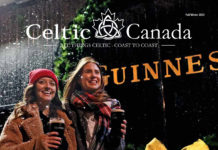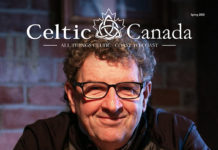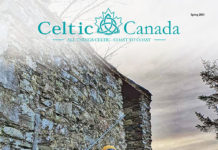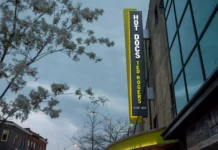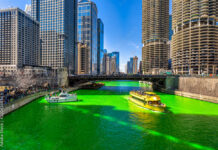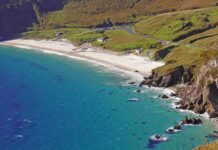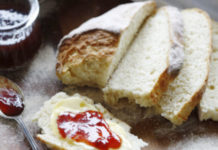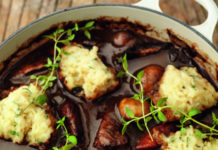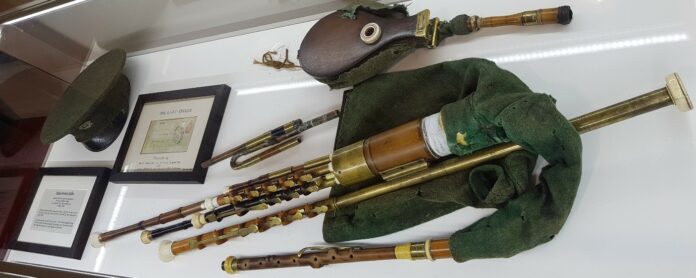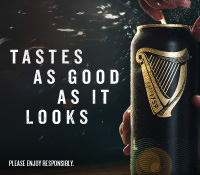My Granduncle’s unwitting part in the execution of Irish patriot and Proclamation signatory Eamonn Ceannt.
For one brief spine- tingling moment; history was brought to life as the audience was held spellbound, as the plaintive tones of “The Foggy Dew” played on Ceannt’s ancient pipes by Eamonn Walsh, filled the small courtyard as Mary Gallagher, Grand niece of Eamonn Ceannt delivered her very moving personal account of her remarkable Grand Uncle who made the ultimate sacrifice for the freedom of a Country he so dearly loved.
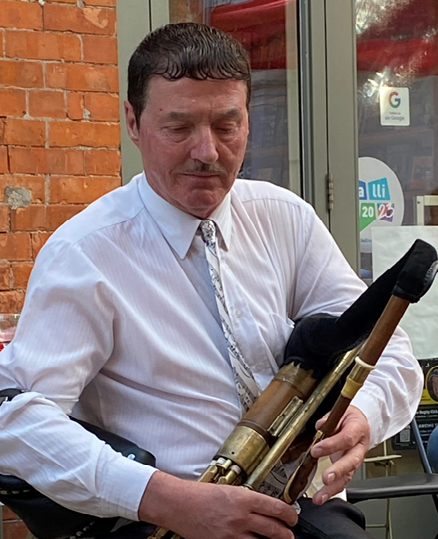
Piper Eamonn Walsh, playing Eamonn Ceannt’s pipes
at the Jackie Clarke Collection Ballina
(Photo credit: Marnie Farrell)
The news that Eamonn Ceannt’s now iconic Uilleann pipes would be presented, on loan to The Jackie Clarke Collection, a museum in Ballina County Mayo, certainly focused my attention; I was well aware that my Grand uncle had fought side by side with Ceannt and indeed with Cathal Brugha and W.T. Cosgrave.
But what I was completely unaware of, until a recent visit to the Museum, was the existence and the dark significance of a seemingly unremarkable scrap of paper which incredibly, bore my Grand Uncle’s name. James Glynn. This small, 3 ins by 2 1/2 ins, yellowed dispatch, significantly dated the 29th April 1916 was written and again significantly, signed by Eamonn Ceannt. The dispatch refers to James’s wounding at the South Dublin Union and subsequent hospitalisation.
The note displays Ceannt’s characteristic empathy and care for his men, a quality which inspired remarkable loyalty and perhaps a quality that ensured his untimely departure at the hands of a military firing squad.
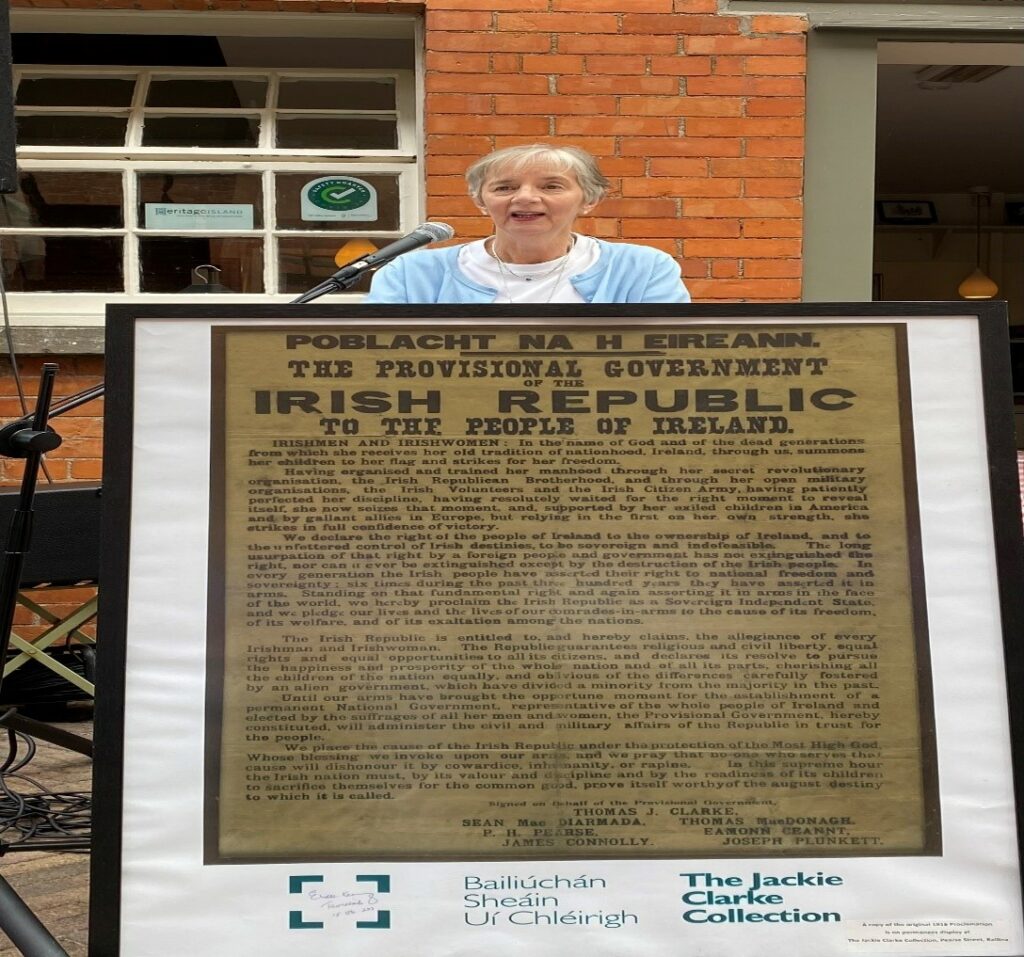
Mary Gallagher, grand niece of Eammon Ceannt at the Jackie Clarke Collection Ballina
Photo credit: Marnie Farrell
James Glynn was born in 1893 at Rialto cottages in the shadow of two great institutions: The South Dublin Union, now St James’ Hospital, the largest and most notorious workhouse in Ireland and The Guinness brewery, the largest brewery site in the World. Both establishments loomed large, both literally and psychologically for the inhabitants of Rialto cottages and for young James, both would exert a huge influence on the trajectory of his young life.
Like his father, he would be employed by the giant brewery, working largely under protestant loyalist overseers and in 1916 he would along with 65 other brave men, take up arms and stand against the tyranny of the British empire at the South Dublin Union.
The S.D.U. was a sprawling complex of buildings; hospitals and workhouses covering an area of over 50 acres and in 1916, was home to 3200 inmates; categorised as infirm, destitute, or insane.
Its origins stem from an act of parliament implemented in 1703 which led to the construction of a workhouse and some 25 years later, a foundling hospital was added to the site. The Hospital, far from being a refuge for abandoned children would turn into an horrific charnel house, where infanticide was routinely practised.
Babies were often, deposited anonymously at one of the gates where, an infant could be left in a basket, which was attached to a revolving door, then collected, following a summoning pull of the porter’s bell.
The grim statistics speak for themselves; between 1791-1796 a total of 5,126 infants were admitted to the infirmary – only one survived! Of the 540 children received in March of 1795 by the Hospital itself 440 died!
At the time of the rising, Guinness, was by far the largest private Company in Dublin employing up to 4,500 and it had a reputation for being pro-Unionist! The founder of the Company in 1759, Arthur Guinness, was an ardent Unionist and opponent of Irish Nationalism and was strongly suspected of being a British spy by the United Irishmen. Arthur’s descendant Lord Iveagh would infamously donate £10,000 to the Ulster Volunteer Force arms fund in 1913 – a massive sum at the time, equivalent to over €1,000000.
1916 was not a good time for a revolution, a quarter of a million Irishmen were fighting in British uniforms including, my Paternal Grandfather.
Loyalties were split with many families dependant on British army wage packets, resulting in Volunteers being abused and spat at by their own people.
The ranks of the Volunteers were made up of working men and Women; Idealists, Philosophers, Poets and Romantics and on that fateful Easter Monday, the 24th of April, James, along with 65 incredibly brave men of the 4th Dublin battalion would, under their Commandant Eamonn Ceannt, Vice Commandant Cathal Brugha and Lieutenant W.T. Cosgrave, take possession of the Nurses’ home establishing their HQ under a standard of green.
The Battalion was woefully under strength. Confusion around the call to arms, would result in a depleted turnout and worse still, their arsenal consisted of old German Mauser rifles, a few old British and Italian rifles, some pistols, shotguns, crow bars, sledgehammers, and even antique pikes!
The 4th Battalion, in July 1914, under the leadership of Eamonn Ceannt had played a leading role in the famous Howth Gun- running incident, facilitating the arrival of 900 German, Mauser model 1871 rifles with 29,000 rounds of ammunition. The guns were unloaded in broad day light from the Asgard, a private yacht owned by Erskine and Molly Childers, the future parents of Irelands fourth President.
The Volunteers at the Nurse’s home would almost immediately draw the attention of the Royal Irish Regiment and fierce fighting would erupt with heavy casualties on both sides, including, civilian inmates of the hospital, who along with hundreds of patients and medical staff had not been evacuated.
Despite the British soldier’s initial success in managing to retake some of the buildings. The order was given to return to barracks – Six soldiers had been killed, from a predominantly Irish born regiment on convalescence from the Western front!
The S.D.U. was situated in Southwest of the city strategically positioned between Richmond barracks and the city centre.
At 14.15 on Thursday the 27th of April, A British ammunition convoy en route to the Royal Hospital Kilmainham, led by Lieut. Colonel Oates of the Nottingham and Derbyshire Regiment, Sherwood Foresters, would inevitably pass the high stone walls of the complex and attempt to cross the Liffey at Rialto bridge.
The Convoy came under fire and rapid fire was quickly returned in the direction of the S.D.U. followed by the order from Colonel Oates to clear the complex of snipers and occupy as much of the area as possible “with a view to distracting the enemy’s attention whilst the transport crossed the bridge” 100 of the Foresters entered the grounds of the S.D.U and moved towards the Nurse’s home.
Under cover of machine gun fire the Foresters attempted a frontal assault which was repulsed by a barrage of heavy fire, causing them to retreat. The next attack came via the adjoining buildings with the soldiers digging their way through a wall into the Nurse’s home where they were met with a devastating blast of rifle fire.
Hand to hand fighting ensued with the British using hand grenades. Cathal Brugha would sustain “catastrophic injuries”; shrapnel and gunshot wounds which would ultimately save him from execution. Commandant Ceannt would not be so lucky; Following a ‘court-martial’, The 34-year-old, sentenced to death, would face a firing squad on the 8th May 1916 at Kilmainham Gaol.
Within 48 hours it would all be over. The hopes of an Republic dashed. James Glynn would survive and along with hundreds of Volunteers would be briefly interred at Richmond barracks in Dublin, before being tried by military court and transported by ship to Wales and Frongoch internment camp.
His pitiful condition at the dockside; he had suffered a shrapnel wound in the hand and had been severely beaten whilst in custody, would incite his younger Brother, John, my grandfather, to join the ranks of the Volunteers. They would serve together following James’s release from Frongoch and would both join the National forces in 1922 fighting side by side in the Civil war.
James’s wounding and subsequent hospitalisation had been dutifully recorded by Commandant Ceannt in dispatches and the document had been used as evidence, at his trial, along with a personal letter from Patrick Pearse which referenced The Howth gun running incident. Both contributing to the case for his execution!
British justice was swift, cursory, and premeditated:
“In view of the gravity of the rebellion and its connection with German intrigue and propaganda, and in view of the great loss of life and destruction of property resulting therefrom, the General Officer Commanding-in-Chief, has found it imperative to inflict the most severe sentences on the known organisers of this detestable rising and on those Commanders who took an active part in the actual fighting which occurred. It is hoped that these examples will be sufficient to act as a deterrent to intriguers, and to bring home to them that the murder of His Majesty’s liege subjects, or other acts calculated to imperil the safety of the Realm, will not be tolerated.”
Generally, the evidence was flimsy and circumstantial, delivered by British soldiers to a ‘drumhead’ court presided over by Brigadier General, Charles Blackader, Commander of the 176 Brigade, which included The Sherwood Foresters, The Regiment responsible for the frontal attack on the SDU and which consequently, incurred the highest military casualties in the uprising.
Crucially, the dispatch places Ceannt at the SDU on the 24th – 29th April and not as a leading witness had claimed, at the Jacob’s biscuit factory:
Major James Armstrong of the Inniskilling Fusiliers had testified that Ceannt had surrendered at the Jacob’s biscuit factory. Ceannt refuted the testament, requesting that John MacBride and other witnesses were called, who testified, corroborating his absence.
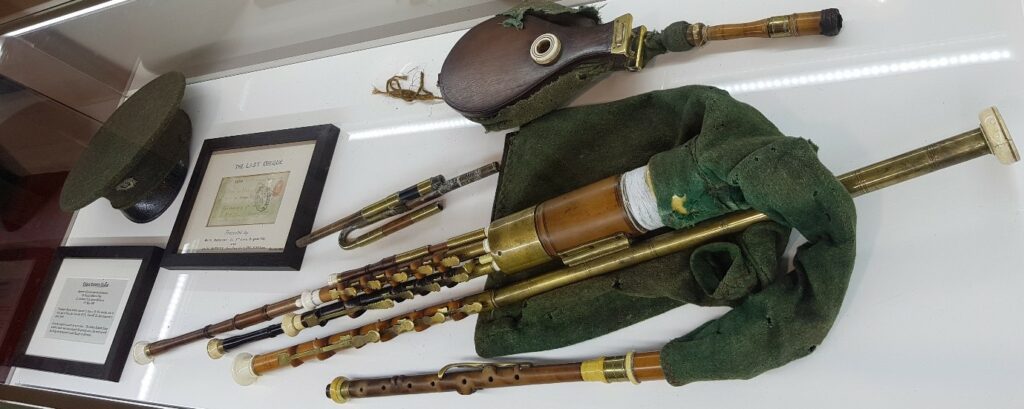
Pic: Eamonn Ceannt’s pipes in the Curragh Military Museum
Article: (By Brendan Farrell)





